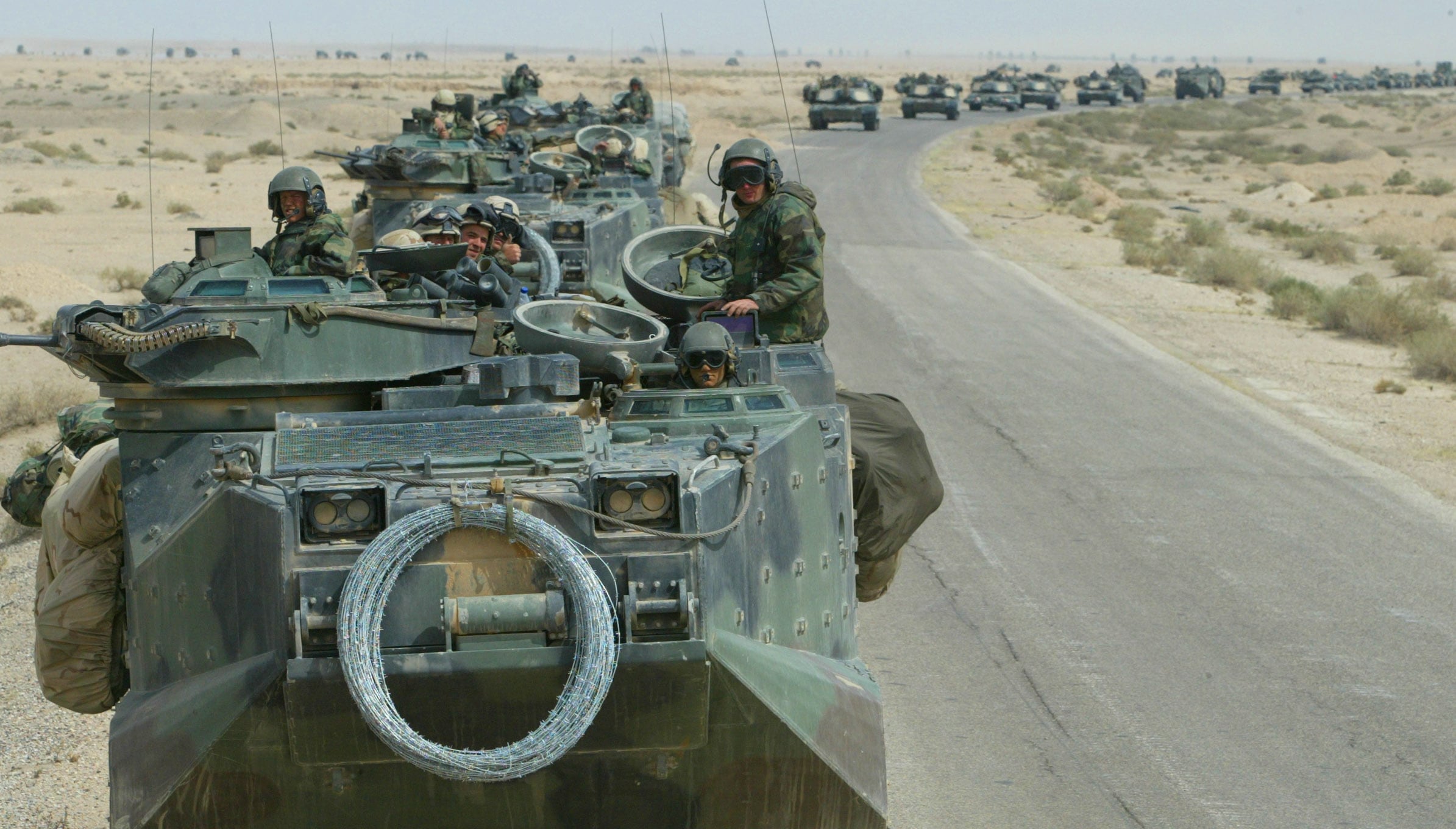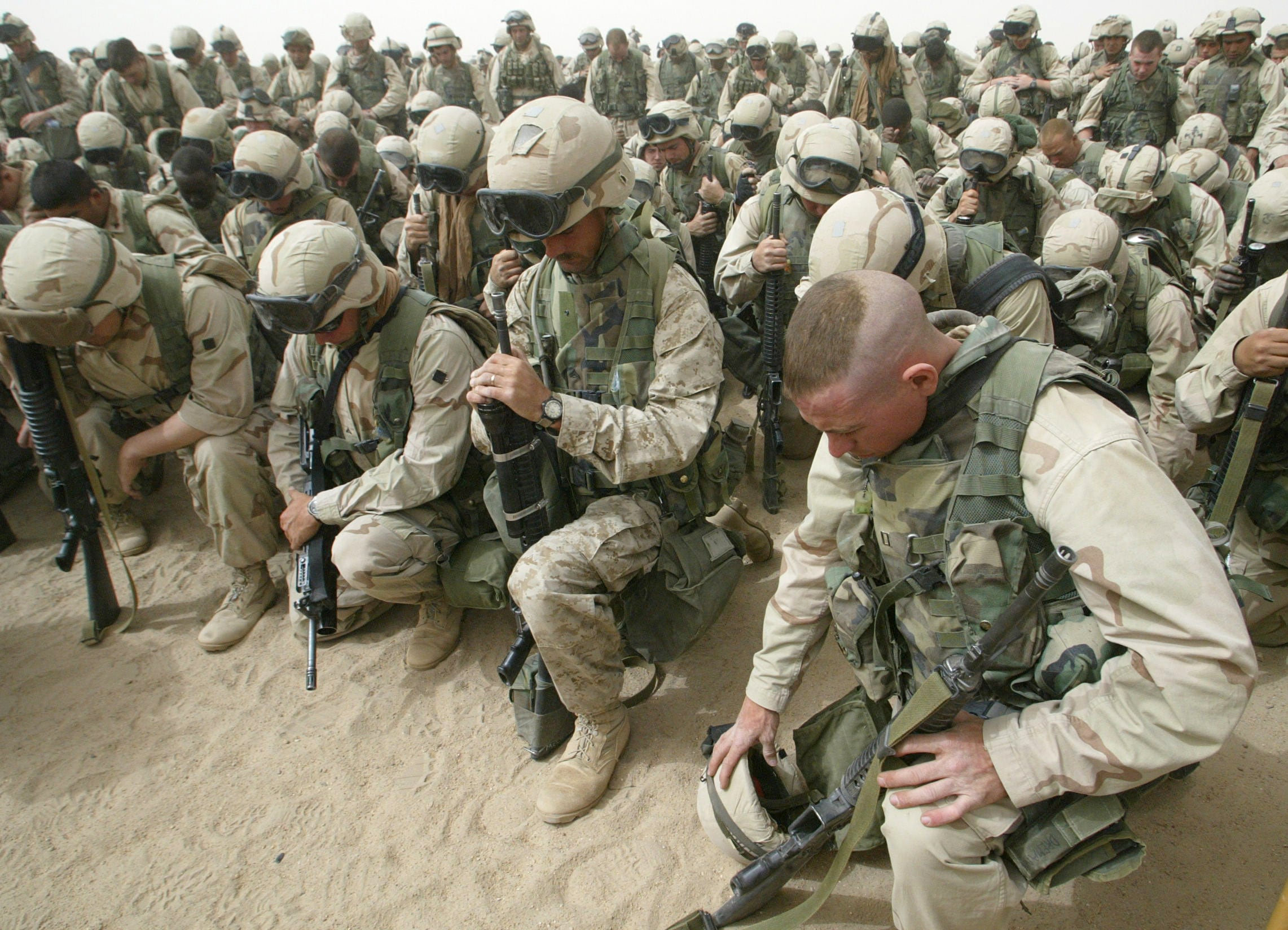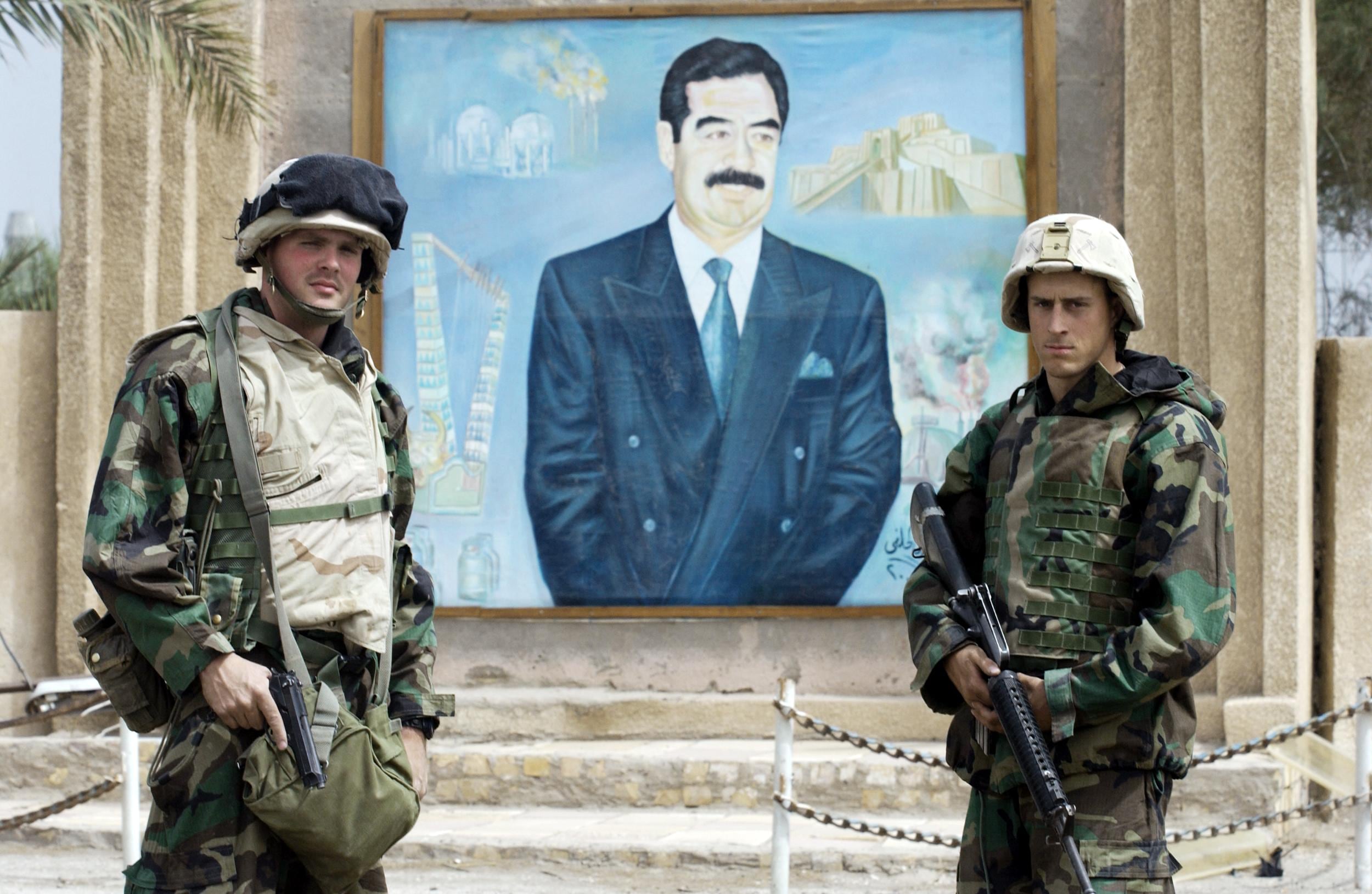Five coalition servicemen died this past week in Iraq. Capt. Moises Navas and Gunnery Sgt. Diego Pongo, both Marines, were killed in northern Iraq by Islamic State fighters, while a few days later, Army Spc. Juan Covarrubias, Air Force Staff Sgt. Marshal Roberts and British medic Lance Cpl. Brodie Gillon died in a rocket attack launched by a Shia militia group.
If media attention hadn’t been fixated on Covid-19, their deaths might have raised the question of what the United States is still doing in Iraq. It’s a fair question. The Islamic State’s physical caliphate is no more, and in the wake of assassination of Iranian Gen. Qassem Soleimani, the Iraqi parliament recently voted to expel U.S. forces. Now, with Iranian-backed militia groups targeting U.S. troops, it’s probably a good time for the administration to assess its policy objectives in Iraq.
To be clear, this isn’t going to be diatribe against military involvement overseas. I have, over the course of a 31-year career, seen my share of wasted effort and lives in pursuit of incoherent policy objectives, but am not of the view that the U.S. can simply retreat behind its borders and expect its national interests to take care of themselves. And there is good reason for continued U.S. military involvement in Iraq: to pre-empt a resurgence of the Islamic State — a threat which, as this recent incident illustrates, has not gone away — and as a check on the malign influence of Iran. The 5,000 U.S. troops currently there might be a relatively small price to pay to achieve those goals, if that is indeed the plan. But at a time when the United States finds itself again at a decision point in Iraq, I am concerned that once again there are no clear policy objectives to guide U.S. military involvement.
I have, like many of my contemporaries in the military, some personal involvement in Iraq’s troubled recent history — most recently as the commander of the coalition special operations task force given the mission of defeating the Islamic State which had, by the beginning of 2016, reached a point only 30 miles from Baghdad. During the ensuing campaign which ultimately enabled the Iraqi security forces to re-take Mosul and effectively expel ISIS from Iraq, we in the task force were compelled to adhere to an uneasy truce with the various Iranian-backed Shia militia groups that fought alongside the Iraqi Army against the common foe.
In my subsequent billet as chief of staff at Special Operations Command Central (SOCCENT), it became clear that Iran would emerge from the counter-ISIS campaign in a position of strength in Iraq. And with ISIS now defeated, it seemed only a matter of time before Iranian-backed militia groups turned on U.S. forces. As SOCCENT planners prepared for this eventuality while working on a wider plan to counter Iran’s malign influence in the region, it became apparent that one person was holding the militia back from attacking U.S. personnel. And that person was one Qassem Soleimani. Why the nemesis of U.S. interests in the region should in this instance, oppose the spilling of American blood, we could only speculate. The reason, we supposed, was that Soleimani was, in the end, a pragmatist — he would have to have been to have survived as long as he did. And for those like him, accustomed to operating in what U.S. national security pundits like to call the “Gray Zone,” there are certain boundaries implicitly acknowledged by both sides to avoid all-out conflict.
When, several months after my retirement, I heard of Soleimani’s death, I assumed that those who planned it understood these rules, and that the decision to break them was taken deliberately, with a plan to mitigate the inevitable repercussions for doing so. Now I’m not so sure. That Kataib Hezbollah — a virulently pro-Iranian militia — would respond by launching rockets at coalition personnel was an entirely predictable response.
Nevertheless, killing Soleimani might still have made sense if it was part of an overarching plan, but the evidence so far indicates that there is no such plan beyond a willingness by the United States to trade blows. And Soleimani’s death, in addition to provoking attacks of the kind that just took place, will make Iran only more determined to influence the Iraqi government to expel U.S. forces from the country once again. And that worries me, because I was hoping that after years of involvement in that troubled country, the U.S. had learned from its mistakes.

Seventeen years ago this month, the U.S. invaded Iraq, beginning a chain of events that even now has yet to run its course. I played a small role in that operation as a planner with 7th Marine Regiment, and remember vividly the sense of anticipation as we rumbled through the border town of Safwan in the gray light of early dawn, part of a vast armored column that stretched for as for as the eye could see while the horizon ahead flashed and rumbled. On that first day, the only sign of resistance came from a stray dog who emerged from the abandoned border post to bark at us furiously, as though a harbinger of things to come.
Some three weeks later, on the day that Baghdad fell, I found myself in Firdous square surrounded by hundreds of Iraqis who swarmed around the giant statue of Saddam Hussein at its center in scenes of riotous celebration. As the statue toppled, the crowd danced and bayed their delight. It was a moment of pure euphoria, the likes of which I had never seen before nor since.
That mood swiftly evaporated, giving way instead to resentment towards the occupiers as a rapidly declining security situation was fueled by a series of rash decisions by the coalition provincial authority. These included the now infamous de-Baathication edict which ensured that the burgeoning insurgency would have no shortage of recruits — armed, trained and angry.
I returned to Iraq several times over the course of the following years. First as an adviser to the nascent Iraqi Army, during which tour I participated in the Battle of Fallujah and subsequent operations in Mosul, providing security for the country’s first democratic elections. Then as an infantry battalion commander to the worst part of notorious Anbar province, a town called with unwitting irony, Karma where the U.S. commander who preceded me was killed by a suicide bomb days before our turnover. I experienced at first hand, the peaks and troughs of the war — from post-liberation euphoria, through the disillusionment and the vertiginous slide into mayhem that followed, to the period of optimism that came in the aftermath of the dramatic increase in troop levels known as the surge.
It was during that period — beginning in 2009 — that it really seemed possible that Iraq might transition into a peaceful democratic society. As the number of violent incidents plummeted, the U.S. military turned over the reins of security to Iraqi security forces and took a back seat. But these milestones of the military campaign were not matched by a sense of political progression, by an understanding that this hard-won reprieve would last only if each segment of Iraqi society — Sunni, Shia and Kurd — were given representation in the new government. There was a brief window of opportunity when a determined U.S. diplomatic and political effort might have curbed the excesses of Prime Minister Nouri al-Maliki, an avowedly Shia politician who rose to power in the U.S.-backed elections of December 2005 and over the course of the next four years steadily consolidated his position. Instead, by the time that Iraqis took responsibility for security, and Maliki announced that he had no further need for U.S. troops, the U.S. government had lost all leverage. And, in the halcyon early days of the Obama administration, it seemed a good time to turn away from a wasteful war.
After the last U.S. troops left Iraq in 2011, Maliki, at the head of the hardline Shia Dawa party, embarked on an agenda that was blatantly sectarian, arresting tribal leaders without reason, and edging out Sunni politicians, to include his deputy prime minister, a Sunni, whom he sentenced to death in absentia. When, in 2013, Sunni tribes in Anbar protested their disenfranchisement, Maliki dispatched his Shia-dominated security forces to quell the disturbance, a task they performed with zealous brutality, killing scores, and leaving in their wake a sense of helpless rage. The stage was set for the subsequent rise of the ISIS in Iraq who seemed to offer the Sunni population, now excluded from the political process, their only recourse.

By the summer of 2014, the stream of Islamic State conquests in Iraq was a gut-wrenching litany of places whose names evoked for so many Marines and soldiers’ memories of bloodshed and suffering: Tal Afar, Mosul, Al Qaim, Haditha, Fallujah, Karma. When I returned to Iraq as head of the special operations task force, I felt for the first time during that war that military and policy objectives were aligned and made sense.
Now — four years later — the Islamic State’s physical caliphate is gone, but the grievances that fueled its rise are still there as I was reminded recently in an email from an Iraqi journalist friend.
“It has been more than 40 days and Iraqis continue demonstrating against their corrupt government. More than 300 of them have been killed, and 15,000 injured. The main power supporting the government is a political block led by Hadi Al-Amiri, the leader of the Badr organization and one of Iran’s main allies. Everyone is asking what is the American stand on this? Is the U.S. just going to watch this?”
My friend’s plaintiff question is a reminder that the United States will never be able to meet the expectations of the few friends it has left in that country. But there is good reason for the U.S. to retain some military presence there: to help train the Iraqi security forces, thus making them more professional and less susceptible to sectarian influence and to assist the Iraqi government in their counter-terrorism efforts. But this time, the administration will need to combine military and economic assistance with a concerted diplomatic effort to prevent a repetition of the Maliki era, when sectarian interests dominated the Iraqi government and gave rise to ISIS.
So many unintended consequences were unleashed that day that our armored columns sped across the border at Safwan opposed only by the forlorn barking of a stray dog. Thousands of lives and trillions of dollars later it does appear, as my friend indicates, that Iran has been the only real winner, and will continue to consolidate power unless the United States implements a clearly defined policy to retain presence and influence. It’s not so much a question of what the United States can hope to gain by continued involvement, as it is about what it stands to lose by a precipitous withdrawal. And to that, recent history bears sobering testament.
Andrew Milburn is a former Marine colonel who retired in March 2019 as the chief of staff of Special Operations Command Central. He has commanded Marine and special operations units in combat at every rank over the course of a 31-year career, and is the author of “When the Tempest Gathers: From Mogadishu to the fight against ISIS, a Marine Special Operations Commander at War.”










